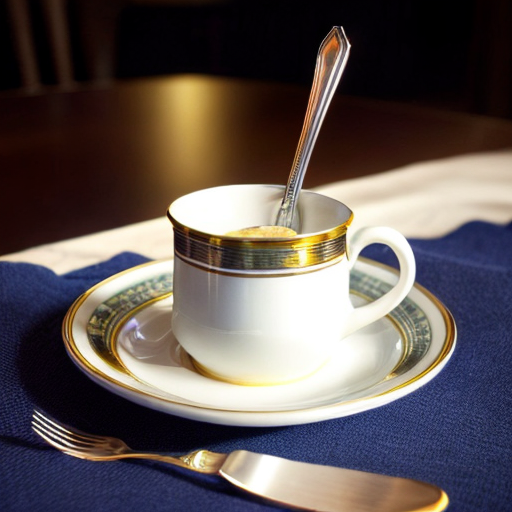Alright, folks, let's dive into the wonderful world of table setting and unravel the mysterious role of silverware. Now, I know what you're thinking - 'How hard can it be? Just throw some forks and knives on the table and call it a day!' Oh, my dear reader, if only it were that simple. The art of silverware placement is like a delicate dance, where each utensil has its own designated spot, waiting to be showcased. Picture this: your table is a stage, and the silverware is the talented cast, ready to perform their culinary duties. The forks, like eager little soldiers, stand tall on the left side, with the salad fork leading the pack. On the right, the knives and spoons take their positions, with the soup spoon playing the role of the gentle giant. And let's not forget the ever-misunderstood butter knife, patiently waiting above the plate, like a tiny sword ready to conquer any bread roll in its path. So, my friends, next time you set the table, remember that silverware is not just a bunch of shiny tools – it's a symphony of dining perfection, waiting to be orchestrated.
An interesting fact about setting silverware on a table is that the placement of each utensil has a specific purpose and etiquette. For example, the knife is always placed to the right of the plate with the blade facing inward, as it is the most commonly used utensil and should be easily accessible for right-handed individuals. On the other hand, the fork is placed to the left of the plate, with the tines facing upward, as it is traditionally used for spearing and lifting food. Additionally, the dessert spoon and fork are usually placed horizontally above the plate, indicating that they will be used at the end of the meal. These precise arrangements not only serve a functional purpose but also reflect the long-standing traditions and attention to detail in formal dining settings.
Ah, the art of placement, where silverware becomes the stars of the show on a formal table. It's like a carefully choreographed ballet, where each utensil has its own designated spot, waiting to dazzle the guests. The forks, elegant and poised, gracefully rest on the left side, with the salad fork leading the way. On the right, the knives and spoons stand tall, ready to make their mark. The soup spoon, like a diva, takes center stage, while the butter knife, a humble supporting actor, patiently waits above the bread plate. And let's not forget the dessert spoon, a sweet finale to this culinary performance. So, my dear readers, next time you set a formal table, remember that silverware placement is an art form, where each piece plays its part to create a symphony of sophistication and style.

Ah, informal dining, where the rules are a bit more relaxed and the atmosphere is casual and laid-back. When it comes to setting silverware for a relaxed meal, simplicity is key. Picture this: you're hosting a cozy dinner with friends, and you want to create a warm and inviting ambiance. Start by placing the dinner fork on the left side of the plate, followed by the dinner knife on the right, with the blade facing inward. If you're serving soup, add a soup spoon to the right of the knife. Now, let's not forget about the spoons! If you're serving a dessert, place a dessert spoon horizontally above the plate. And if you're feeling fancy and want to offer a salad, add a salad fork to the left of the dinner fork. Remember, in informal dining, it's all about keeping things relaxed and comfortable, so don't stress too much about the precise placement. Just make sure your guests have everything they need to enjoy their meal, and let the good times roll!
Did you know that when setting silverware on a table, the order of placement can help you remember which utensils to use first? Just remember the acronym 'FORKS'! F stands for Fork, O for the Plate (the fork goes on the left and the knife and spoon on the right), R for the Right (the knife and spoon go on the right side of the plate), K for Knife, and S for Spoon. So, next time you're setting the table, just remember to 'FORKS' it up!
Ah, etiquette and finesse, the hallmarks of a truly refined dining experience. When it comes to mastering the finer points of silverware placement, attention to detail is key. Let's start with the basics: the forks, like elegant companions, rest on the left side of the plate, with the salad fork closest to the plate and the dinner fork slightly further out. On the right side, the knives and spoons take their positions, with the blade of the dinner knife facing inward and the soup spoon placed to the right of the knife. Now, let's not forget about the delicate dance of the dessert utensils. The dessert spoon and fork can be placed horizontally above the plate, with the spoon on top and the fork below. And for those who appreciate a touch of sophistication, the butter knife can be placed diagonally across the bread plate. Remember, my dear readers, mastering the art of silverware placement is like a symphony of elegance, where each piece plays its part to create a harmonious and refined dining experience.